- صفحه اصلی سایت
- فهرست کتاب ها
- پزشکی قلب و عروق، قفسه سینه
- نورولوژی، جراحی مغز و اعصاب و علوم اعصاب
- چشم پزشکی، بینایی سنجی
- دندان پزشکی، دهان و فک و صورت
- پزشکی دستگاه گوارشی، کبد و صفراوی
- پزشکی گوش، حلق و بینی
- پزشکی ریه و مجاری تنفسی
- ارولوژی و نفرولوژی
- ارتوپدی و روماتولوژی
- پوست و مو و ناخن (درماتولوژی)
- جراحی (عمومی،زیبایی و ..)
- پزشکی زنان و زایمان
- پزشکی بازسازی و احیا
- بیماریهای عفونی و قارچی
- غدد و متابولیسم
- انکولوژی، سرطان و تومور شناسی
- معاینات و علائم تشخیصی
- بیهوشی (عمومی و موضعی)
- رادیولوژی، پرتو نگاری، سونوگرافی، اسکن، MRI، تصویربرداری، ماموگرافی
- تروما (ارتوپدی، فک و صورت، مغزی)
- آموزش پزشکی، آمادگی آزمون و منابع پزشکی
- آناتومی و فیزیولوژی
- ایمونولوژی و آلرژی
- پاتولوژی، سیتوپاتولوژی و سیتولوژی
- پروتز و اندام مصنوعی
- پزشکی کودکان، نوزادان و جنین شناسی
- سلول های بنیادی
- هماتولوژی (خون شناسی) و پزشکی انتقال خون
- چاقی، تغذیه و رژیم غذایی
- اخلاق پزشکی
- پزشک قانونی
- پیرپزشکی و پزشکی سالمندان
- مراقبت های ویژه، حاد و بحرانی
- پیوند اعضا
- داروسازی، داروشناسی و دارودرمانی
- روانپزشکی
- دامپزشکی
- پرستاری و دستیاری پزشک
- علوم آزمایشگاهی
- سم شناسی
- انگل شناسی
- ژن شناسی و ژن درمانی (ژنتیک)
- بافت شناسی و مهندسی بافت
- تکنولوژی و بیوتکنولوژی پزشکی
- توان بخشی، کاردرمانی، ورزش درمانی
- پزشکی سنتی و گیاهی و پزشکی جایگزین
- بهداشت و درمان
- مهندسی شیمی
- مهندسی پزشکی
- مهندسی صنایع غذایی
- فیزیک و بیوفیزیک
- زیست شناسی (بیولوژی سلولی و مولکولی)
- شیمی
- بیوشیمی (پزشکی، دارویی و …) و شیمی بالینی
- بیو انفورماتیک، انفورماتیک پزشکی
- نرم افزارهای مورد نیاز
- پشتیبانی بوک باز
دانلود کتاب راهنمای تافونومی پزشکی قانونی
Manual of Forensic Taphonomy, 2ed
The main goals in any forensic skeletal analysis are to answer who is the person represented (individualization), how that person died (trauma/pathology) and when that person died (the postmortem interval or PMI). The analyses necessary to generate the biological profile include the determination of human, nonhuman or nonosseous origin, the minimum number of individuals represented, age at death, sex, stature, ancestry, perimortem trauma, antemortem trauma, osseous pathology, odontology, and taphonomic effects―the postmortem modifications to a set of remains.
The Manual of Forensic Taphonomy, Second Edition covers the fundamental principles of these postmortem changes encountered during case analysis. Taphonomic processes can be highly destructive and subtract information from bones regarding their utility in determining other aspects of the biological profile, but they also can add information regarding the entire postmortem history of the remains and the relative timing of those effects. The taphonomic analyses outlined provide guidance on how to separate natural agencies from human-caused trauma. These analyses are also performed in conjunction with the field processing of recovery scenes and the interpretation of the site formation and their postdepositional history.
The individual chapters categorize these alterations to skeletal remains, illustrate and explain their significance, and demonstrate differential diagnosis among them. Such observations may then be combined into higher-order patterns to aid forensic investigators in determining what happened to those remains in the interval from death to analysis, including the environment(s) in which the remains were deposited, including buried, terrestrial surface, marine, freshwater, or cultural contexts.
Features
Provides nearly 300 full-color illustrations of both common and rare taphonomic effects to bones, derived from actual forensic cases
• Presents new research including experimentation on recovery rates during surface search, timing of marine alterations, trophy skulls, taphonomic laboratory and field methods, laws regarding the relative timing of taphonomic effects, reptile taphonomy, human decomposition, and microscopic alterations by invertebrates to bones
• Explains and illustrates common taphonomic effects and clarifies standard terminology for uniformity and usage within in the field
While the book is primarily focused upon large vertebrate and specifically human skeletal remains, it effectively synthesizes data from human, ethological, geological/paleontological, paleoanthropological, archaeological artifactual, and zooarchaeological studies. Since these taphonomic processes affect other vertebrates in similar manners, The Manual of Forensic Taphonomy, Second Editionwill be invaluable to a broad set of forensic and investigative disciplines.
About the Author
James T. Pokines, Ph.D., D.-.A.B.F.A., is an Associate Professor in the Forensic Anthropology Program, Department of Anatomy and Neurobiology, Boston University School of Medicine. He is also the Forensic Anthropologist for the Office of the Chief Medical Examiner, Boston, Commonwealth of Massachusetts, and analyzes all unknown bone cases in that state.
لینک کوتاه : https://bookbaz.ir/?p=273849
نویسنده : James T. Pokines
ناشر : CRC Press; 2nd edition
سال انتشار : 2021
زبان کتاب : انگلیسی
نوع فایل : PDF
تعداد صفحات : 768
(ISBN) شابک : 0367774372
قیمت کتاب درآمازون : $149.00
حجم فایل : 38 MBf

کتاب های مرتبط:
 دانلود کتاب سمینارهای روانپزشکی قانونی
دانلود کتاب سمینارهای روانپزشکی قانونیSeminars in Forensic Psychiatry 2nd Edition
 دانلود کتاب تصویر پزشکی در دادگاه
دانلود کتاب تصویر پزشکی در دادگاهMedical Illustration in the Courtroom 1st Edition
 دانلود کتاب پاتولوژی پزشکی قانونی دی مایو
دانلود کتاب پاتولوژی پزشکی قانونی دی مایوDiMaio’s Forensic Pathology, 3ed
 دانلود کتاب اصول پاتولوژی پزشکی قانونی: از بررسی تا صدور گواهی
دانلود کتاب اصول پاتولوژی پزشکی قانونی: از بررسی تا صدور گواهیPrinciples of Forensic Pathology: From Investigation to Certification, 1ed
 دانلود کتاب روانپزشکی قانونی آکسفورد
دانلود کتاب روانپزشکی قانونی آکسفوردForensic Psychiatry, 2ed
 دانلود کتاب Case Studies for Advances in Paleoimaging and Other Non-Clinical Applications, 1ed
دانلود کتاب Case Studies for Advances in Paleoimaging and Other Non-Clinical Applications, 1ed
 دانلود کتاب Advances in Paleoimaging: Applications for Paleoanthropology, Bioarchaeology, Forensics, and Cultural Artifacts, 1ed
دانلود کتاب Advances in Paleoimaging: Applications for Paleoanthropology, Bioarchaeology, Forensics, and Cultural Artifacts, 1ed
 دانلود کتاب راهنمای کامل آزمون گواهینامه بیولوژی مولکولی ABC
دانلود کتاب راهنمای کامل آزمون گواهینامه بیولوژی مولکولی ABCThe Complete Guide to the ABC Molecular Biology Certification Exam, 1ed
 دانلود کتاب خفگی، اختناق و مرگ ناشی از فشار گردن
دانلود کتاب خفگی، اختناق و مرگ ناشی از فشار گردنAsphyxiation, Suffocation, and Neck Pressure Deaths, 1ed
 دانلود کتاب تخمین زمان پس از مرگ
دانلود کتاب تخمین زمان پس از مرگEstimation of the Time Since Death, 4ed
 دانلود کتاب ابزارها و دستگاه های پزشکی قانونی مدرن: روندها در تحقیقات جنایی
دانلود کتاب ابزارها و دستگاه های پزشکی قانونی مدرن: روندها در تحقیقات جناییModern Forensic Tools and Devices: Trends in Criminal Investigation, 1ed
 دانلود کتاب آنالیز DNA پزشکی قانونی ساده شده: راهنمای افراد کنجکاو
دانلود کتاب آنالیز DNA پزشکی قانونی ساده شده: راهنمای افراد کنجکاوForensic DNA Analyses Made Simple: A Guide for the Curious, 1ed
 دانلود کتاب انسان شناسی مرگ خشونت آمیز
دانلود کتاب انسان شناسی مرگ خشونت آمیزAnthropology of Violent Death, 1ed
 دانلود کتاب نوروپاتولوژی قانونی
دانلود کتاب نوروپاتولوژی قانونیForensic Neuropathology, 2ed
 دانلود کتاب پزشکی قانونی سیمپسون
دانلود کتاب پزشکی قانونی سیمپسونSimpson’s Forensic Medicine, 14ed
 دانلود کتاب تخمین زمان پس از مرگ: تحقیقات فعلی و روندهای آینده
دانلود کتاب تخمین زمان پس از مرگ: تحقیقات فعلی و روندهای آیندهEstimation of the Time since Death: Current Research and Future Trends, 1ed
 دانلود کتاب پزشکی قانونی ضروری
دانلود کتاب پزشکی قانونی ضروریEssential Forensic Medicine, 1ed
 دانلود کتاب راهنمای پزشکی قانونی (۳ جلدی)
دانلود کتاب راهنمای پزشکی قانونی (۳ جلدی)Handbook of Forensic Medicine, 3-Vol, 2ed
 دانلود کتاب اطلس روانشناسی قانونی و جنایی
دانلود کتاب اطلس روانشناسی قانونی و جناییAtlas of Forensic and Criminal Psychology, 1ed
 دانلود کتاب آسیب مصور: چگونه تصاویر پزشکی در پرونده های حقوقی پیروز می شوند Injury Illustrated: How Medical Images Win Legal Cases, 1ed
دانلود کتاب آسیب مصور: چگونه تصاویر پزشکی در پرونده های حقوقی پیروز می شوند Injury Illustrated: How Medical Images Win Legal Cases, 1ed
 دانلود کتاب میکروسکوپی پزشکی قانونی: راهنمای آزمایشگاه
دانلود کتاب میکروسکوپی پزشکی قانونی: راهنمای آزمایشگاهPractical Forensic Microscopy: A Laboratory Manual, 2ed
 دانلود کتاب پاتولوژی کالبد شکافی: راهنما و اطلس + ویدئو
دانلود کتاب پاتولوژی کالبد شکافی: راهنما و اطلس + ویدئوAutopsy Pathology: A Manual and Atlas, 3ed + Video
 دانلود کتاب مرگ ناگهانی غیرمنتظره در صرع
دانلود کتاب مرگ ناگهانی غیرمنتظره در صرع Sudden Unexpected Death in Epilepsy, 1ed
 دانلود کتاب مرور پاتولوژی پزشکی قانونی: پرسش و پاسخ
دانلود کتاب مرور پاتولوژی پزشکی قانونی: پرسش و پاسخForensic Pathology Review: Questions and Answers, 1ed
 دانلود کتاب اثرات تغییرات اقلیمی بر آلرژن ها و بیماری های آلرژیک
دانلود کتاب اثرات تغییرات اقلیمی بر آلرژن ها و بیماری های آلرژیک Impacts of Climate Change on Allergens and Allergic Diseases, 1ed
 دانلود کتاب اطلس ترومای اسکلتی در زمینه پزشکی قانونی
دانلود کتاب اطلس ترومای اسکلتی در زمینه پزشکی قانونی An Atlas of Skeletal Trauma in Medico-Legal Contexts, 1ed
 دانلود کتاب معرفی جامع انسان شناسی پزشکی قانونی
دانلود کتاب معرفی جامع انسان شناسی پزشکی قانونی Forensic Anthropology: A Comprehensive Introduction, 2ed
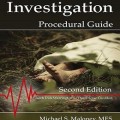 دانلود کتاب بررسی صحنه مرگ: راهنمای رویه ای
دانلود کتاب بررسی صحنه مرگ: راهنمای رویه ایDeath Scene Investigation: Procedural Guide, 2ed
 دانلود کتاب میکروبیولوژی بالینی
دانلود کتاب میکروبیولوژی بالینیClinical Microbiology, 2ed
 دانلود کتاب ملزومات بیماری های عفونی بالینی
دانلود کتاب ملزومات بیماری های عفونی بالینیEssentials of Clinical Infectious Diseases, 2ed
 دانلود کتاب راهنمای آمادگی آزمون برای دانشجویان: پزشکی قانونی و سم شناسی
دانلود کتاب راهنمای آمادگی آزمون برای دانشجویان: پزشکی قانونی و سم شناسیExam Preparatory Manual for Undergraduates: Forensic Medicine & Toxicology, 1ed
 دانلود کتاب اطلس عکاسی منطقه ای ویژگی های غیر متریک و آناتومیک اسکلت انسانی
دانلود کتاب اطلس عکاسی منطقه ای ویژگی های غیر متریک و آناتومیک اسکلت انسانیPhotographic Regional Atlas of Non-Metric Traits and Anatomical Variants in the Human Skeleton, 1ed
 دانلود کتاب پاتولوژی قلب و مرگ ناگهانی در پزشکی قانونی
دانلود کتاب پاتولوژی قلب و مرگ ناگهانی در پزشکی قانونیPathology of the Heart and Sudden Death in Forensic Medicine, 1ed
 دانلود کتاب دندان شناسی قانونی: اصول و تمرین
دانلود کتاب دندان شناسی قانونی: اصول و تمرینForensic Odontology: Principles and Practice, 1ed
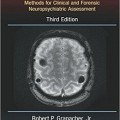 دانلود کتاب آسیب های مغزی تروماتیک: روش های ارزیابی بالینی و قانونی اعصاب روان
دانلود کتاب آسیب های مغزی تروماتیک: روش های ارزیابی بالینی و قانونی اعصاب روانTraumatic Brain Injury: Methods for Clinical and Forensic Neuropsychiatric Assessment, 3ed
 دانلود کتاب آموزش و تحصیل علوم پزشکی قانونی
دانلود کتاب آموزش و تحصیل علوم پزشکی قانونی Forensic Science Education and Training, 1ed
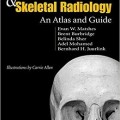 دانلود کتاب استخوانشناسی و رادیولوژی اسکلتی انسان: اطلس و راهنما
دانلود کتاب استخوانشناسی و رادیولوژی اسکلتی انسان: اطلس و راهنماHuman Osteology and Skeletal Radiology: An Atlas and Guide, 1ed
 دانلود کتاب اعمال رایج در پزشکی قانونی (جلد ۲)
دانلود کتاب اعمال رایج در پزشکی قانونی (جلد ۲)Current Practice in Forensic Medicine, Volume 2, 1ed
 دانلود کتاب میکروبیولوژی پزشکی قانونی
دانلود کتاب میکروبیولوژی پزشکی قانونی Forensic Microbiology (Forensic Science in Focus), 1ed
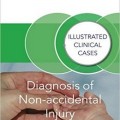 دانلود کتاب تشخیص آسیب غیر تصادفی: موارد بالینی مصور
دانلود کتاب تشخیص آسیب غیر تصادفی: موارد بالینی مصورDiagnosis of Non-accidental Injury: Illustrated Clinical Cases, 1ed
 دانلود کتاب روانپزشکی قانونی: بررسی بورد ضروری
دانلود کتاب روانپزشکی قانونی: بررسی بورد ضروریForensic Psychiatry: Essential Board Review, 1ed
 دانلود کتاب اطلس رنگی کالبد شکافی واگنر (ویرایش ۲۰۱۷)
دانلود کتاب اطلس رنگی کالبد شکافی واگنر (ویرایش ۲۰۱۷)Color Atlas of the Autopsy, 2ed
 دانلود کتاب اطلس پاتولوژی کالبد شکافی بزرگسالان
دانلود کتاب اطلس پاتولوژی کالبد شکافی بزرگسالانAtlas of Adult Autopsy Pathology, 1ed
 دانلود کتاب اپیدمیولوژی پزشکی قانونی: اصول و تمرین
دانلود کتاب اپیدمیولوژی پزشکی قانونی: اصول و تمرینForensic Epidemiology: Principles and Practice, 1ed
 دانلود کتاب شواهد نقطه گزش: اطلس رنگی و متن
دانلود کتاب شواهد نقطه گزش: اطلس رنگی و متنBitemark Evidence: A Color Atlas and Text, 2ed
 دانلود کتاب پزشکی قانونی غذا
دانلود کتاب پزشکی قانونی غذاFood Forensics, 1ed
 دانلود کتاب تفسیر شواهد DNA پزشکی قانونی
دانلود کتاب تفسیر شواهد DNA پزشکی قانونیForensic DNA Evidence Interpretation, 2ed
 دانلود کتاب آسیب شناسی کالبد شکافی: راهنما و اطلس
دانلود کتاب آسیب شناسی کالبد شکافی: راهنما و اطلسAutopsy Pathology: A Manual and Atlas, 3ed
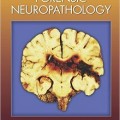 دانلود کتاب نوروپاتولوژی پزشکی قانونی
دانلود کتاب نوروپاتولوژی پزشکی قانونیForensic Neuropathology, 3ed
 دانلود کتاب پاتولوژی پزشکی قانونی نایت
دانلود کتاب پاتولوژی پزشکی قانونی نایتKnight’s Forensic Pathology, 4ed
 دانلود کتاب رادیولوژی پزشکی قانونی براگدون
دانلود کتاب رادیولوژی پزشکی قانونی براگدونBrogdon’s Forensic Radiology, 2ed
 دانلود کتاب اطلس رنگی آسیب شناسی پزشکی قانونی
دانلود کتاب اطلس رنگی آسیب شناسی پزشکی قانونی Color Atlas of Forensic Medicine and Pathology, 2ed
 دانلود کتاب زخم گلوله: جنبه های عملی سلاح گرم، پرتابه و تکنیک های پزشکی قانونی
دانلود کتاب زخم گلوله: جنبه های عملی سلاح گرم، پرتابه و تکنیک های پزشکی قانونی Gunshot Wounds: Practical Aspects of Firearms, Ballistics, and Forensic Techniques, 3ed
 دانلود کتاب نقد و بررسی پزشکی قانونی و سم شناسی (جنبه های بالینی و پاتولوژیک)
دانلود کتاب نقد و بررسی پزشکی قانونی و سم شناسی (جنبه های بالینی و پاتولوژیک)Review of Forensic Medicine and Toxicology (Including Clinical & Pathological Aspects), 3ed
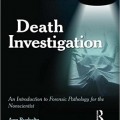 دانلود کتاب بررسی مرگ: مقدمه پزشکی قانونی برای غیر دانشمند
دانلود کتاب بررسی مرگ: مقدمه پزشکی قانونی برای غیر دانشمندDeath Investigation: An Introduction to Forensic Pathology for the Nonscientist, 1ed
 دانلود کتاب اطلس پزشکی قانونی: برای پلیس، دانشمندان پزشکی قانونی، وکلا و محققان مرگ
دانلود کتاب اطلس پزشکی قانونی: برای پلیس، دانشمندان پزشکی قانونی، وکلا و محققان مرگAtlas of Forensic Pathology: For Police, Forensic Scientists, Attorneys, and Death Investigators, 2012th
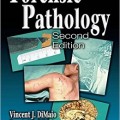 دانلود کتاب پزشکی قانونی (جنبه های عملی تحقیقات جنایی و پزشکی قانونی)
دانلود کتاب پزشکی قانونی (جنبه های عملی تحقیقات جنایی و پزشکی قانونی)Forensic Pathology (Practical Aspects of Criminal and Forensic Investigations), 2ed
 دانلود کتاب آسیب شناسی کالبد شکافی
دانلود کتاب آسیب شناسی کالبد شکافی Autopsy Pathology: A Manual and Atlas, 2ed
 دانلود کتاب اطلس هیستوپاتولوژی پزشکی قانونی
دانلود کتاب اطلس هیستوپاتولوژی پزشکی قانونی Atlas of Forensic Histopathology
 دانلود کتاب پزشکی قانونی
دانلود کتاب پزشکی قانونی Handbook of Forensic Pathology, 2ed
 دانلود کتاب آسیب شناسی پزشکی قانونی: اصول و تمرین
دانلود کتاب آسیب شناسی پزشکی قانونی: اصول و تمرینForensic Pathology: Principles and Practice, 1ed
 دانلود کتاب مبانی پزشکی قانونی دیجیتال
دانلود کتاب مبانی پزشکی قانونی دیجیتالThe Basics of Digital Forensics: The Primer for Getting Started in Digital Forensics, 2ed
 دانلود کتاب اطلس رنگی آسیب شناسی پزشکی قانونی
دانلود کتاب اطلس رنگی آسیب شناسی پزشکی قانونی Color Atlas of Forensic Medicine and Pathology
 دانلود کتاب هندبوک پزشکی قانونی
دانلود کتاب هندبوک پزشکی قانونی Handbook of Forensic Medicine, 1ed
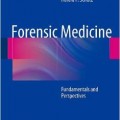 دانلود کتاب پزشکی قانونی: اصول و دیدگاه
دانلود کتاب پزشکی قانونی: اصول و دیدگاهForensic Medicine: Fundamentals and Perspectives, 2014th
 دانلود کتاب هندبوک پزشکی قانونی آکسفورد
دانلود کتاب هندبوک پزشکی قانونی آکسفوردOxford Handbook of Forensic Medicine
 دانلود کتاب پزشکی قانونی سیمپسون
دانلود کتاب پزشکی قانونی سیمپسونSimpson’s Forensic Medicine, 13ed
 دانلود کتاب سم شناسی تحلیلی پزشکی قانونی کلارک
دانلود کتاب سم شناسی تحلیلی پزشکی قانونی کلارکClarke’s Analytical Forensic Toxicology, 2ed
 دانلود کتاب پزشکی قانونی و سم شناسی
دانلود کتاب پزشکی قانونی و سم شناسیTextbook of Forensic Medicine and Toxicology
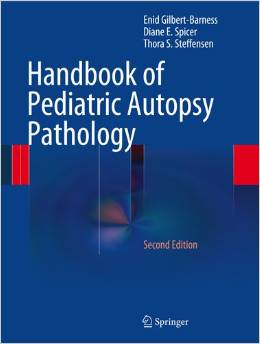 دانلود کتاب آسیب شناسی کالبد شکافی کودکان
دانلود کتاب آسیب شناسی کالبد شکافی کودکانHandbook of Pediatric Autopsy Pathology


